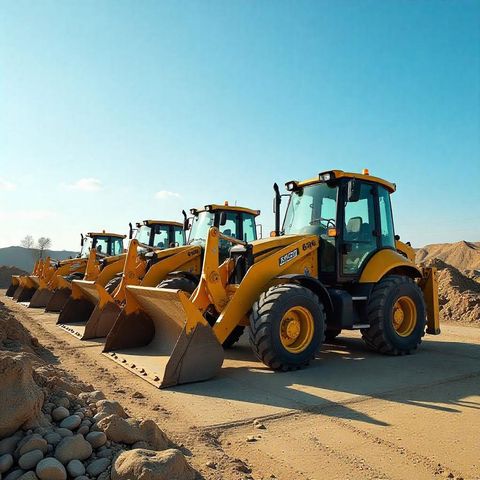Learn How Industrial Blowers Improve Airflow and Efficiency
Industrial blowers are mechanical devices designed to move large volumes of air or gas through ducts, systems, or processes. They are essential in industrial operations that require controlled airflow for cooling, ventilation, dust control, and combustion. Unlike household fans, industrial blowers deliver higher pressure and airflow, making them critical for maintaining safe and efficient working conditions.
The concept of industrial blowers dates back to the early days of mechanical engineering when industries needed reliable air movement for furnaces and ventilation systems. Today, they are used in sectors such as manufacturing, chemical processing, HVAC systems, cement plants, and wastewater treatment.

Common types of industrial blowers include centrifugal blowers, axial blowers, and regenerative blowers, each designed for specific airflow and pressure needs.
Importance
Industrial blowers play a key role in ensuring safety, productivity, and energy efficiency across various applications.
Why Industrial Blowers Matter
-
Air Quality Management: Blowers help remove dust, fumes, and hazardous gases from workspaces.
-
Energy Efficiency: Efficient airflow reduces heating and cooling costs in large facilities.
-
Equipment Cooling: Machinery and electrical panels depend on consistent airflow to prevent overheating.
-
Process Efficiency: In industries like cement, food processing, and pharmaceuticals, blowers optimize combustion, drying, and pneumatic conveying.
Who Benefits
| Sector | Application | Benefit |
|---|---|---|
| Manufacturing | Ventilation, drying | Improved air circulation |
| Power Plants | Combustion support | Enhanced fuel efficiency |
| Wastewater Treatment | Aeration | Better oxygen supply for bacteria |
| Food Processing | Cooling and packaging | Product quality maintenance |
| Chemical Plants | Gas handling | Safe emission control |
By maintaining consistent airflow, blowers also contribute to compliance with environmental and occupational safety standards.
Recent Updates
The industrial blower industry is undergoing technological innovation, focusing on energy efficiency, noise reduction, and digital monitoring.
Key Trends and Developments (2024–2025):
-
Energy-Efficient Motors (2025): Manufacturers are increasingly adopting IE4 and IE5 class motors, which reduce power consumption by up to 15–20%.
-
Smart Blower Systems: Integration of IoT sensors allows real-time performance monitoring and predictive maintenance.
-
Noise Control Advancements: Modern designs use aerodynamic blades and sound enclosures to reduce noise pollution in workplaces.
-
Sustainable Manufacturing: Many blower companies now use recyclable materials and eco-friendly coatings to minimize environmental impact.
-
Customization for Specific Industries: Demand for tailored blower systems for cleanrooms, pharmaceuticals, and food industries has grown significantly.
According to MarketsandMarkets (2025), the global industrial blower market is projected to reach USD 7.3 billion by 2030, driven by industrial automation and environmental control requirements.
Laws or Policies
Industrial blowers are governed by multiple national and international standards to ensure efficiency, safety, and environmental compliance.
Key Regulations and Standards
-
ISO 5801: Specifies methods for performance testing of industrial fans and blowers.
-
Energy Efficiency Regulations: Many countries, including India and the U.S., require the use of IE3 or higher energy-efficient motors under programs like Bureau of Energy Efficiency (BEE).
-
OSHA Guidelines: The Occupational Safety and Health Administration (OSHA) mandates proper ventilation in industrial environments to prevent harmful gas buildup.
-
Environmental Protection Laws: Industries must ensure that blowers used in emission systems meet EPA or CPCB air quality standards.
-
Noise Control Regulations: Under ISO 13347, manufacturers must test and declare sound levels to comply with workplace safety norms.
Compliance with these standards ensures both worker safety and reduced environmental footprint.
Tools and Resources
Recommended Tools and Platforms for Industrial Blower Selection and Analysis
| Tool/Resource | Type | Purpose |
|---|---|---|
| Centrifugal Fan Calculator (engineeringtoolbox.com) | Online Calculator | Calculate airflow, pressure, and efficiency |
| HVAC Load Explorer | Software | Estimates airflow requirements for ventilation systems |
| CFD Software (ANSYS, COMSOL) | Simulation Tool | Analyze airflow patterns and optimize design |
| Blower Selector Tools (from brands like Gardner Denver, Atlas Copco) | Online Configurator | Helps select blowers based on capacity and application |
| Energy Efficiency Audit Services | Service | Identifies energy-saving opportunities in blower systems |
Useful Apps and Sites
-
Fluke Connect App: Monitors vibration and motor performance in real-time.
-
ABB Ability Platform: Offers remote monitoring for industrial blowers.
-
Engineering Toolbox: Provides free charts and airflow data tables.
These resources assist engineers and facility managers in optimizing blower performance, reducing downtime, and ensuring compliance with energy standards.
FAQs
Q1. What is the difference between centrifugal and axial blowers?
Centrifugal blowers use a rotating impeller to increase air pressure, ideal for high-pressure applications. Axial blowers move air parallel to the shaft, suitable for high-volume, low-pressure environments like ventilation.
Q2. How can I improve the energy efficiency of industrial blowers?
Regular maintenance, motor upgrades (to IE4/IE5 class), and the use of variable frequency drives (VFDs) can enhance energy efficiency significantly.
Q3. What are the main causes of blower failure?
Common causes include improper lubrication, excessive vibration, clogged filters, and overloading. Predictive maintenance tools can prevent these issues.
Q4. Are industrial blowers noisy?
Modern blowers are designed with aerodynamic impellers and noise enclosures that keep operational noise below recommended limits, typically under 85 dB.
Q5. Can blowers be used in hazardous environments?
Yes. Explosion-proof blowers are available for industries like petrochemical or mining, complying with ATEX or IECEx standards.
Final Thoughts
Industrial blowers are vital components in maintaining air quality, cooling systems, and process efficiency across multiple sectors. As industries evolve toward automation and sustainability, the role of smart, energy-efficient blowers continues to expand.
By adopting advanced technologies and following regulatory standards, businesses can enhance productivity, reduce operational costs, and minimize their environmental footprint. Whether used in manufacturing, energy, or waste management, industrial blowers remain an essential part of modern industrial infrastructure.







